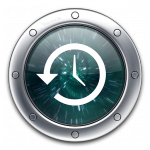Time Machine
 Well, as most of you will know already, I got a nice shiny MacBook a week or two ago. I haven’t really said much on here because I tend to turn into a dribbling fanatic when talking about macs, and it upsets my PC-bound wife. But I have to talk about Time Machine. I’ve no choice.
Well, as most of you will know already, I got a nice shiny MacBook a week or two ago. I haven’t really said much on here because I tend to turn into a dribbling fanatic when talking about macs, and it upsets my PC-bound wife. But I have to talk about Time Machine. I’ve no choice.
The thing is, disks are big these days, and between keeping all my documents and finances on the computer, having years worth of photos and music, and all the time that goes into getting it set up just right, the fear of losing hardware constantly niggles away at the back of my mind.
Not any more, though. I’ve mentioned, way back in the distant past, the way I’m always impressed by the fact that a Mac, as delivered, already has 99% of the stuff you’re ever likely to need already installed. Well, Time Machine takes it one step further than that. It’s a backup program – the kind you really have to spend quite a bit of money on in windowsland.Â
It works like this. You connect an external USB hard drive. It asks you if you want to use it for Time Machine. You say yes. Your backup needs are now met.
What it does is this – it does a full system backup. Then every hour or so it does an incremental. It then does a weekly and a monthly. By default, it will keep the last week’s worth of hourly backups, several months of weekly backups, and monthly backups for as long as there’s available disk space. Once disk space runs low, it’ll remove the oldest Monthly backup.
But that all just happens behind the scenes. If you don’t have your external drive connected – if you’re out and about, for example, it’ll just do the backup next time you connect it.
You can then click the Time Machine icon on the dock and get a swirly swooshy view of your machine at any point in time since the backups started. Travel back to the date you want, browse the filesystem to find the file you want and click restore. Done. This even works in applications – start Apple Mail, click Time Machine and browse your inbox or deleted items from $wayback.Â
A nice touch is that full system recovery can also be carried out. Boot of the OSX installer DVD, select “Time Machine Restore” and poof! off it goes.
It’s just lovely.
Leave a Comment